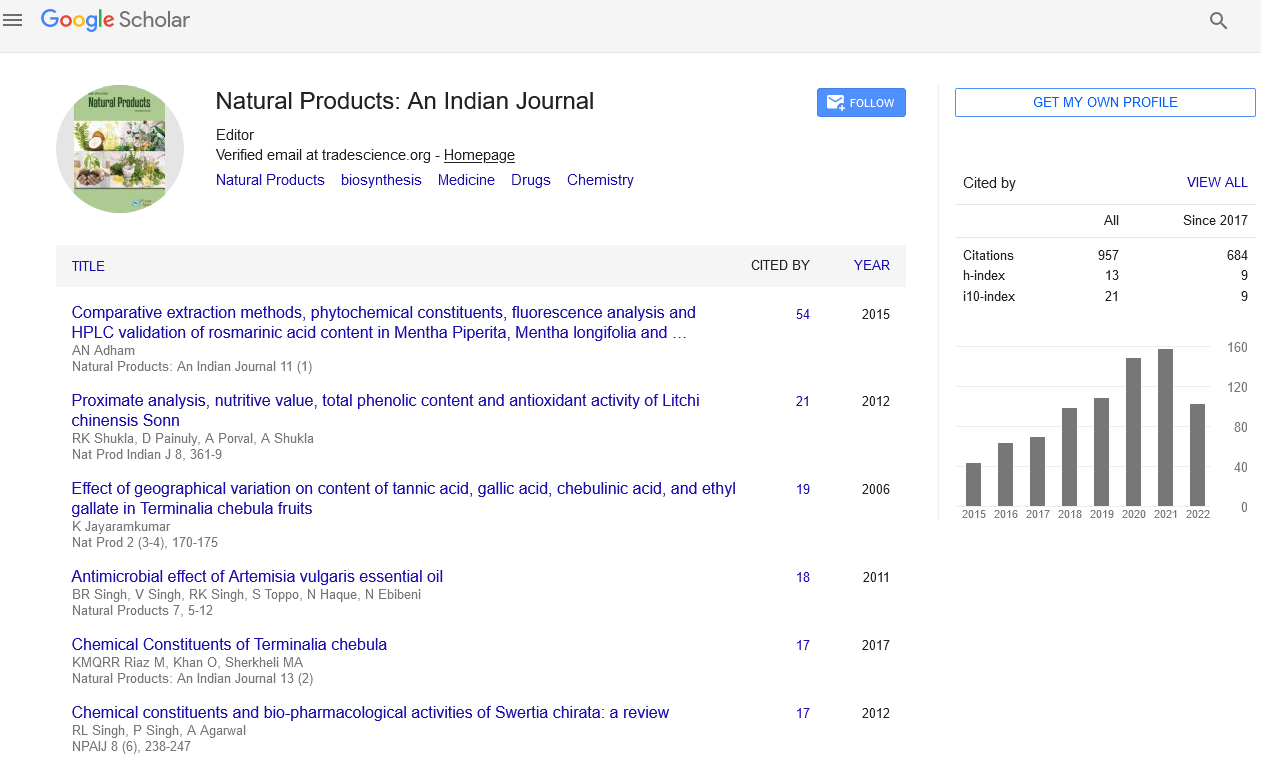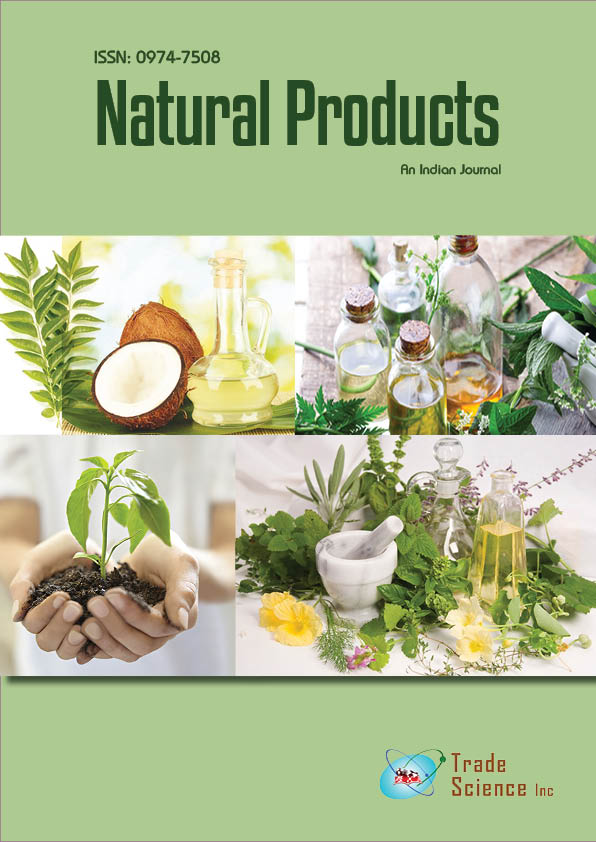Abstract
Natural products of Anthracophyllum discolor: Ligninolytic enzymes and antifungal volatile Compounds
Author(s): Heidi Schalchli, Briceno G and Diez M CWhite-rot fungi play important roles in ecosystems mainly because of their extracellular enzymatic system and their production of chlorinated aromatic compounds that act as decomposers of organic matter, antibiotics for protecting fungi, methyl donors and/or substrates for H2 O2 -generating oxidases. In this study, we evaluated the production of ligninolytic enzymes and antifungal volatile organic compounds (VOCs) by A. discolor Sp4 using Potato Peels (PP) and Discarded Potato (DP) as nutritional support. The manganese-dependent peroxidase (MnP) was evaluated by monitoring the oxidation of 2, 6-dimethoxyphenol. Beside the production of MnP, the discoloration of remazol brilliant blue R (RBBR) was also determined using a qualitative assay. The antifungal activity of VOCs against Mucor miehei and Fusarium oxysporum was evaluated using a bi-compartmented plate assay. Finally, VOCs released from mycelial cultures were analyzed by headspace solid phase microextraction and gas chromatography mass spectrometry. The highest MnP and MiP activities (163 U L-1 and 24 U L-1) were obtained at day 15 of incubation and a complete RBBR discoloration was observed. Although both potato wastes supported the ligninolytic activity, a higher MnP activity was obtained using PP than DP. The A. discolor volatiles inhibited approximately 62% and 76% the mycelial growth of M. miehei on PP agar and DP agar media, respectively. Nevertheless, the plant pathogen F. oxysporum was slightly inhibited (approximately 10%). The major VOCs detected were chlorinated aromatic compounds (over 50% relative area). The obtained natural products have multiple biotechnological applications among which are pollutant degradation and plant protection increase efficacy. The valorization of agro-industrial wastes as nutritional supports for producing bio-products offers farmers and agro-industry product diversification and improved environmental sustainability. The use of these wastes as substrates for microbial cultivation is currently an active field of research, allowing for energy to be saved and reducing environmental waste disposal (Dhillon et al. 2011; Obruca et al. 2015; Gopalan and Nampoothiri 2016). Some of the most interesting bio-products are biofuels and high value chemical compounds (e.g. antimicrobials, antioxidants, pigments and industrial enzymes) (Gassara et al. 2010; Hughes et al. 2014; Rodrigues et al. 2014; Schalchli et al. 2015). Different food wastes from the agro-industry and their potential recoveries have been studied, with fruits and vegetables being the most promising sources of valuable compounds (Mirabella et al. 2014). Among them, potato solid wastes (PSW) have been reported as an interesting source of carbohydrates, proteins and micronutrients that can be used as raw materials for the growth of fungi and synthesis of their bio-products (Rosales et al. 2002; Schieber and Saldaña 2009). Currently, PSW represents a disposal problem in numerous potato production and processing systems, since ~40 to 50% of the total production is unsuitable for human consumption constituting a source of plant pathogens (Charmley et al. 2006). Microbial growth is supported by media with a high content of starch (approx. 50% dry weight), which is one of the best carbon sources for some white-rot fungi (WRF) for growth and degradation of organic molecules, such as recalcitrant dyes (Revankar and Lele 2007).

